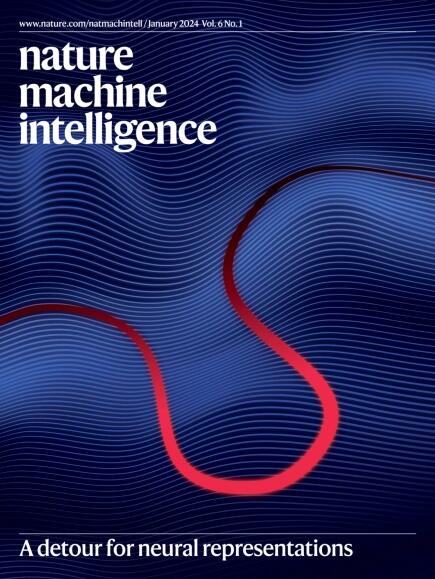Generating 3D small binding molecules using shape-conditioned diffusion models with guidance
IF 23.9
1区 计算机科学
Q1 COMPUTER SCIENCE, ARTIFICIAL INTELLIGENCE
引用次数: 0
Abstract
Drug development is a critical but notoriously resource- and time-consuming process. Traditional methods, such as high-throughput screening, rely on opportunistic trial and error and cannot ensure optimal precision design. To overcome these challenges, generative artificial intelligence methods have emerged to directly design molecules with desired properties. Here we develop a generative artificial intelligence method DiffSMol for drug discovery that generates 3D small binding molecules based on known ligand shapes. DiffSMol encapsulates ligand shape details within pretrained, expressive shape embeddings and generates binding molecules through a diffusion model. DiffSMol further modifies the generated 3D structures iteratively using shape guidance to better resemble ligand shapes, and protein pocket guidance to optimize binding affinities. We show that DiffSMol outperforms state-of-the-art methods on benchmark datasets. When generating binding molecules resembling ligand shapes, DiffSMol with shape guidance achieves a success rate 61.4%, substantially outperforming the best baseline (11.2%), meanwhile producing molecules with de novo graph structures. DiffSMol with pocket guidance also outperforms the best baseline in binding affinities by 13.2%, and even by 17.7% when combined with shape guidance. Case studies for two critical drug targets demonstrate very favourable physicochemical and pharmacokinetic properties of generated molecules, highlighting the potential of DiffSMol in developing promising drug candidates. Chen et al. introduce an AI-driven method that generates 3D small-molecule drug candidates and outperforms existing approaches by leveraging ligand shape information.


生成三维小结合分子使用形状条件扩散模型与指导
药物开发是一个关键但众所周知的资源和耗时的过程。传统的方法,如高通量筛选,依赖于机会性的试错,不能确保最佳的精度设计。为了克服这些挑战,生成式人工智能方法已经出现,可以直接设计具有所需特性的分子。在这里,我们开发了一种基于已知配体形状生成3D小结合分子的药物发现生成人工智能方法DiffSMol。DiffSMol将配体形状细节封装在预训练的、具有表现力的形状嵌入中,并通过扩散模型生成结合分子。DiffSMol进一步使用形状引导来迭代修改生成的三维结构,以更好地模仿配体形状,并使用蛋白质口袋引导来优化结合亲和力。我们证明了DiffSMol在基准数据集上优于最先进的方法。在生成类似配体形状的结合分子时,具有形状引导的DiffSMol成功率达到61.4%,大大优于最佳基线(11.2%),同时生成具有从头图结构的分子。带有口袋引导的DiffSMol在结合亲和度上也比最佳基线高出13.2%,在结合形状引导时甚至高出17.7%。对两个关键药物靶点的案例研究表明,生成的分子具有非常有利的物理化学和药代动力学特性,突出了DiffSMol在开发有前途的候选药物方面的潜力。
本文章由计算机程序翻译,如有差异,请以英文原文为准。
求助全文
约1分钟内获得全文
求助全文
来源期刊

Nature Machine Intelligence
Multiple-
CiteScore
36.90
自引率
2.10%
发文量
127
期刊介绍:
Nature Machine Intelligence is a distinguished publication that presents original research and reviews on various topics in machine learning, robotics, and AI. Our focus extends beyond these fields, exploring their profound impact on other scientific disciplines, as well as societal and industrial aspects. We recognize limitless possibilities wherein machine intelligence can augment human capabilities and knowledge in domains like scientific exploration, healthcare, medical diagnostics, and the creation of safe and sustainable cities, transportation, and agriculture. Simultaneously, we acknowledge the emergence of ethical, social, and legal concerns due to the rapid pace of advancements.
To foster interdisciplinary discussions on these far-reaching implications, Nature Machine Intelligence serves as a platform for dialogue facilitated through Comments, News Features, News & Views articles, and Correspondence. Our goal is to encourage a comprehensive examination of these subjects.
Similar to all Nature-branded journals, Nature Machine Intelligence operates under the guidance of a team of skilled editors. We adhere to a fair and rigorous peer-review process, ensuring high standards of copy-editing and production, swift publication, and editorial independence.
 求助内容:
求助内容: 应助结果提醒方式:
应助结果提醒方式:


